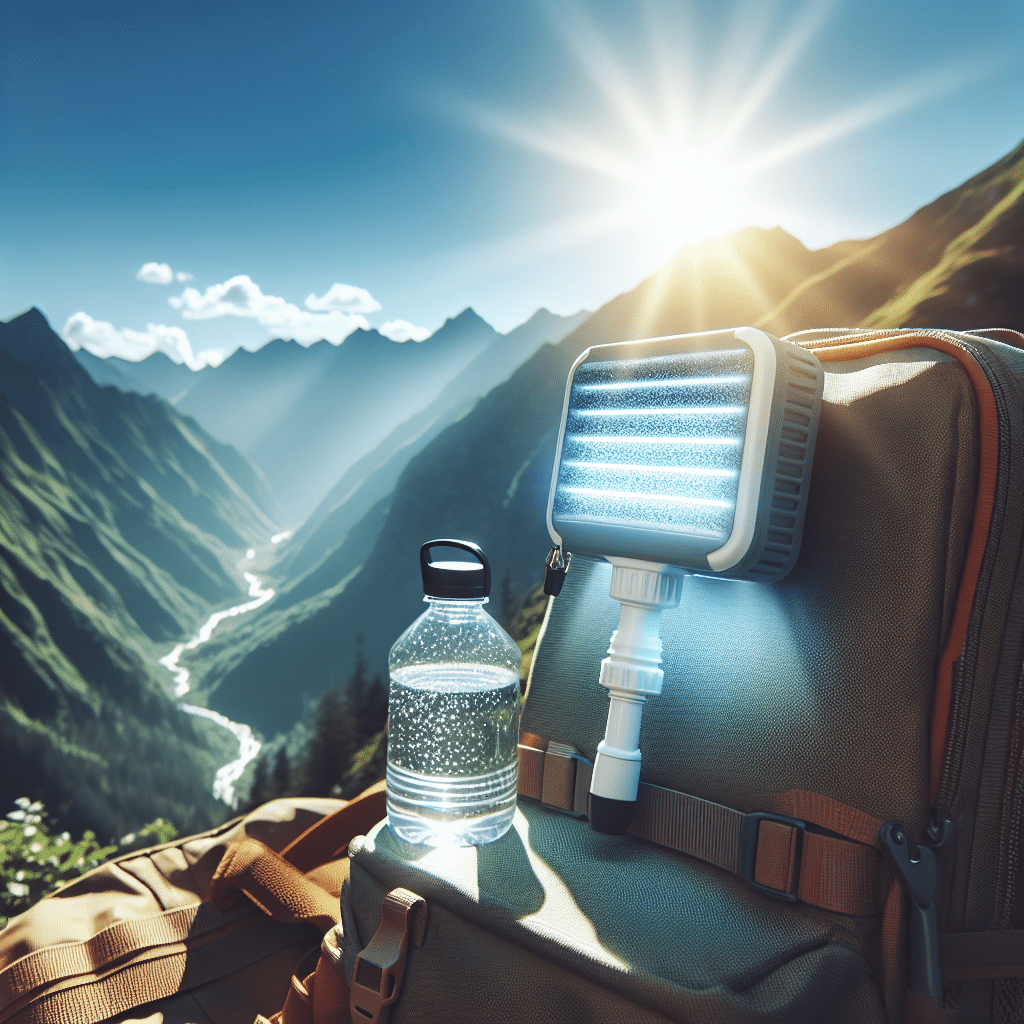Understanding UV Light Purifiers
UV (ultraviolet) light purifiers are innovative devices that use ultraviolet radiation to eliminate bacteria, viruses, and other pathogens in water, making it safe for consumption. The technology capitalizes on the germicidal properties of UV light, which disrupts the DNA of microorganisms, effectively rendering them harmless. Given the prevalence of waterborne illnesses, especially in remote outdoor settings, UV purifiers are becoming essential gear for backpackers.
How UV Light Purifiers Work
All UV purifiers operate on a fundamental principle: the emission of UV-C light, a spectrum of UV light that is effective in sterilizing water. These devices typically have a UV lamp housed within a protective casing. When water passes over or through this device, the UV light targets microorganisms, exposing them to radiation that interferes with their reproductive capabilities.
Mechanism of Action:
- UV-C Emission: The purifier emits UV-C rays, typically at wavelengths of 200–280 nm, which are highly effective for disinfection.
- Microbial Exposure: As water flows through or is exposed to the device, pathogens absorb the radiation.
- DNA Disruption: The absorbed UV energy disrupts DNA molecules, making it impossible for pathogens to reproduce, ultimately killing them.
Advantages of UV Light Purifiers for Backpacking
1. Lightweight and Portable
Most UV light purifiers are compact and weigh little, making them an ideal choice for backpackers looking to minimize pack weight. Many models are designed to fit easily into a pocket, enhancing their portability.
2. Fast Action
UV purifiers can treat water rapidly, often requiring as little as 60 seconds to eliminate up to 99.99% of common pathogens. This speed means you can quickly hydrate after a long hike without extensive waiting times.
3. Chemical-Free
Unlike chemical purifiers, such as iodine tablets or chlorine, UV light purification does not add any taste or residual chemicals to the water. This ensures that you can enjoy fresh-tasting water directly from natural sources.
4. Environmentally Friendly
UV light purification is a sustainable option, relying solely on electricity or battery power without generating waste like plastic water bottles or single-use purification tablets.
5. Versatile Applications
Many UV purifiers can treat water from various sources, including lakes, streams, and even stored water in containers, making them versatile for different backpacking scenarios.
Disadvantages to Consider
1. Power Dependency
Most UV purifiers rely on batteries or external power sources. During extended trips, it’s essential to have backup power options or solar chargers available to keep them operational.
2. Pre-Filtering Required
For effective disinfection, UV light must penetrate the water. Hence, any turbidity, such as dirt and sediment, may shield pathogens from UV exposure. Backpackers should pre-filter water from murky sources to enhance the efficacy of UV purification.
3. Limited Effectiveness Against Chemical Contaminants
While UV purifiers excel at eliminating biological contaminants, they are ineffective against chemical pollutants, such as heavy metals or pesticides, which may be present in some water sources.
Top UV Light Purifiers for Backpacking Trips
1. SteriPEN Adventurer Opti
- Weight: 3.6 oz
- Capacity: Treats 32 oz in 90 seconds
- Power Source: Rechargeable lithium battery
The SteriPEN Adventurer Opti features a user-friendly design and is perfect for solo backpackers. Its advanced UV technology provides effective disinfection while remaining lightweight, making it a favorite among outdoor enthusiasts.
2. CamelBak All Clear
- Weight: 0.5 lbs
- Capacity: Treats 0.75 liters in 60 seconds
- Power Source: 4 AA batteries
The CamelBak All Clear sports a robust build with a transparent reservoir, allowing users to see the purification process. Its larger capacity is well-suited for group trips and makes it easier to administer multiple servings of water at once.
3. Grayl UltraPress
- Weight: 10.9 oz
- Capacity: 16 oz in under 30 seconds
- Power Source: No batteries required
While primarily a filter, the Grayl UltraPress also uses UV technology to enhance purification. Its straightforward operation and dual functionality as a water bottle and purifier make it highly practical for backpackers.
Tips for Using UV Light Purifiers While Backpacking
Pre-Filter When Necessary
If you’re sourcing water from a muddy stream or an area with heavy sediment, pre-filter the water using a mesh cloth or a portable filter to ensure effective purification.
Carry Extra Power Sources
If you’re planning a lengthy backpacking trip, take along extra batteries or a portable solar charger designed for outdoor use. This ensures your UV light purifier remains functioning throughout your journey.
Monitor Water Quality
Even with a UV purifier, it’s prudent to assess the water source. Be cautious around potential chemical contamination sites, such as agricultural runoff areas.
Maintaining Your UV Light Purifier
Proper maintenance of your UV purifier ensures longevity and efficacy. Always follow the manufacturer’s instructions, which generally include:
- Cleaning the Lens: Regularly clean the UV lamp’s surface to prevent any build-up that could hinder performance.
- Storage: Ensure it’s stored in a cool, dry place when not in use to protect its components.
- Battery Care: Regularly check and replace batteries according to the manufacturer’s recommendations.
Conclusion: The Future of Backpacking Water Purification
Adopting UV light purifiers could revolutionize the way backpackers approach hydration. As technology advances and designs become even more efficient, these purifiers promise not only to optimize water safety but also to enhance the overall outdoor experience. By ensuring that the gear is lightweight, effective, and environmentally friendly, backpackers can prioritize both health and enjoyment while exploring the great outdoors.
